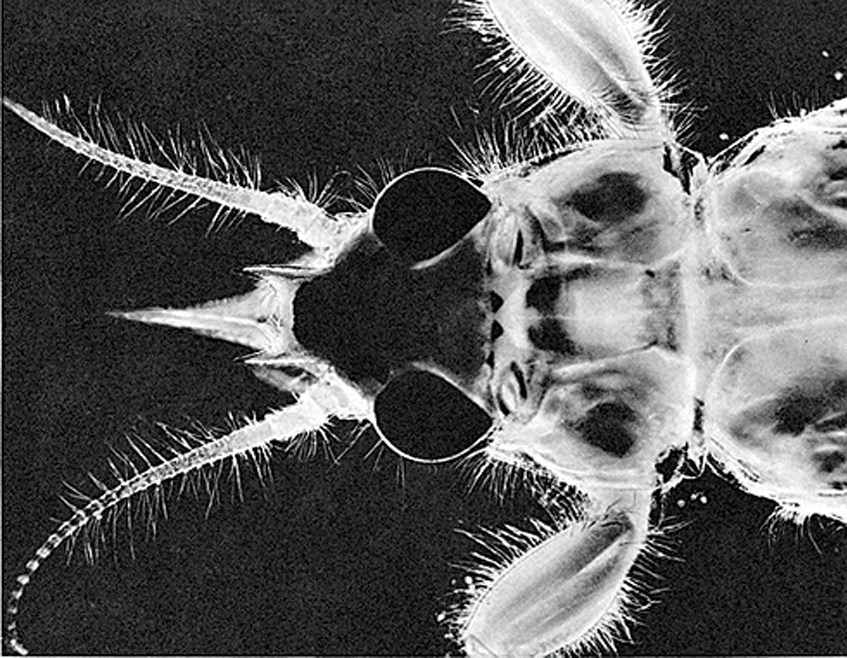Batia Suter: Parallel Encyclopedia Extended, Polygon Gallery, until Jan. 13, 2019. For more details visit thepolygon.ca.
The exhibit doesn’t really start until you see the third photo – the one that’s not there.
Three days before the exhibit’s official opening, the Polygon Gallery’s white walls are disappearing beneath a cascade of seemingly unrelated photographic prints selected by Swiss visual artist Batia Suter.
There’s vegetable plants next to a vacuum cleaner overtop a chorus line of explosions beneath an image that resembles a habitual liar’s polygraph results.
But when a glimpse becomes a stare the exhibit’s patterns start to assert themselves – the first photo leads to the second picture which takes you to the third. And then there’s those geometric shapes that recur like a bad habit. A ball, a bulb and a UFO over New Mexico all suddenly belong together.
The juxtaposition of photos can create: “impossible situations,” Suter explains, noting she puts pictures together despite – or sometimes because of – their wildly divergent esthetics.
Leafing through one of her most recent books, Suter notes a wide shot of a desert.
“If you see only one picture you think: ‘Oh yeah, it’s one sharp old picture,’” she explains. “But when you bring them together . . . it’s like you feel that you are in the desert.”
It’s at that point the photos take on a narrative prompted by Suter but created by the viewer. Two pictures are seen but the pattern-seeking imagination creates a third.
“I really like if you don’t understand . . . you fill in what you see.”
Fittingly for a bookmaker, Suter is fascinated with books.
“Books are sharks,” novelist Douglas Adams once said. “There were sharks before there were dinosaurs, and the reason sharks are still in the ocean is that nothing is better at being a shark than a shark.”
Working on book, Suter becomes, “the captain of the situation,” she says. The exhibit is largely an adaptation of the book, she adds.
Eschewing all manner of e-readers and Internet research portals, as well as the stultifying feeling of algorithm-based luck, Suter begins her work in bookstores.
She’s aware that she could scroll for images using Internet search engines, but something would be missing from the pictures.
“It wouldn’t speak like that,” she says.
The old pictures have grit and mistakes, she says. “And so they have personality.”
She has an affection for high-culture hardcovers, low-culture pulps, science textbooks, and cookbooks, she explains.
“I started to collect books for images,” she says. “My collection was growing and growing.”
Batia Suter Parallel Encyclopedia #2 from chema sanmoran on Vimeo.
She estimates she amassed about 1,000 books, some of which she’d purchased just to own one image.
She had stacks of scanned, drawn and painted images. What she didn’t have, at least not consciously, was a reason for having them.
“I had to find out why I am collecting these images,” she says.
At first she thought the collection was a product of purely personal interests. But in sharing her studio she observed other artists reacting to her assortment of images: “Woah, what is this? Where did you find this?” she remembers a colleague demanding.
“I started to realize that this is not only personal,” she says. “This trigger in the images, they trigger others.”
Some of that, she says, is an “automatic reflex,” to take disparate pieces of nonsense and make them into sense.
“I play with this reflex,” she says.
Suter’s playfulness is on display as she flips through one of her books and points to plastic red ring taken from a child’s revolver toy. The image is next to a series of landscape photos.
“You can wonder why it’s on this page, why it’s working so well,” she says, grinning as she points to the plastic ring like a magician letting you peek behind the illusion.
“On the other side I’m looking for really unconscious associations,” she says, discussing the audience’s reaction to the pictures. “In a way they are testing the images.”
Discussing the photos, Suter talks about the ambivalence that forms between an image of a garden and a mirror.
“It’s very difficult to explain in English,” she says. But at that point, almost all of her prints are on the walls at Polygon, and the pictures speak in all languages.



